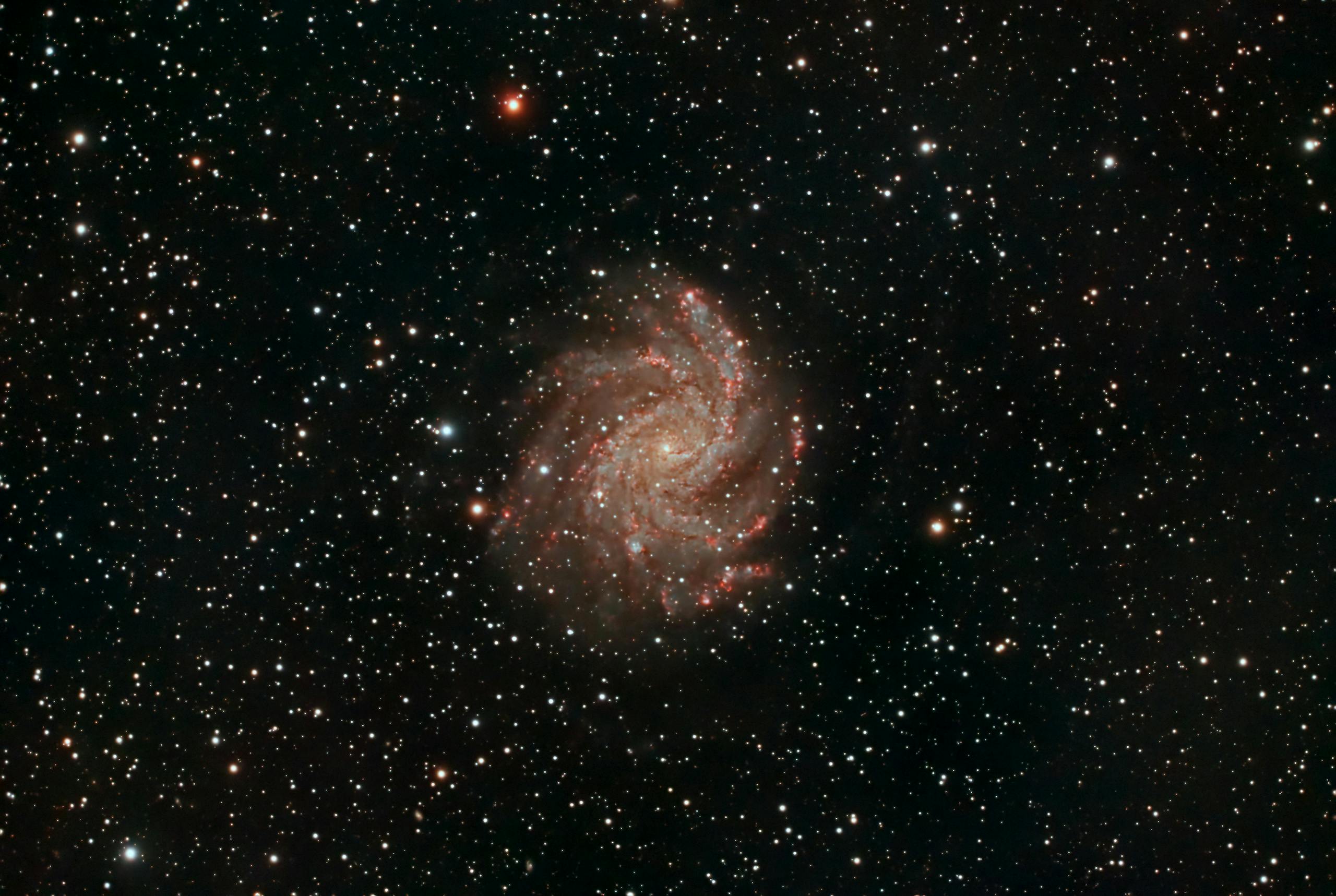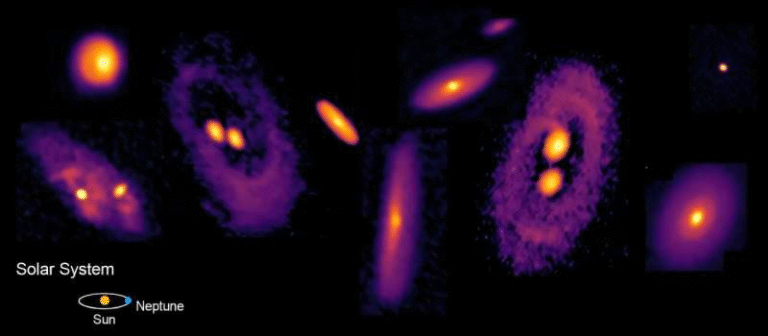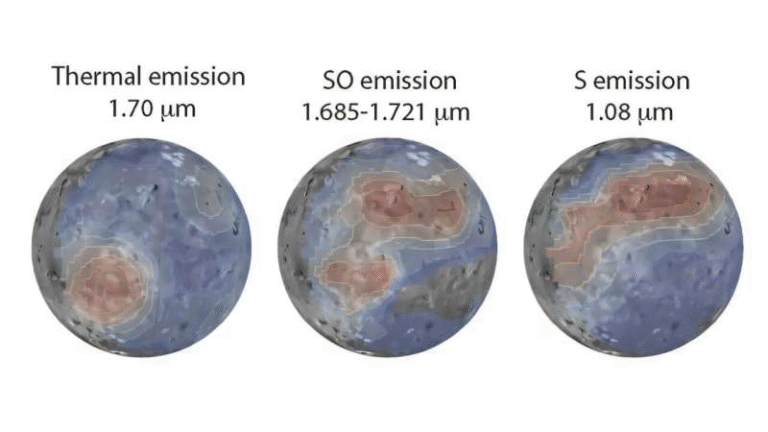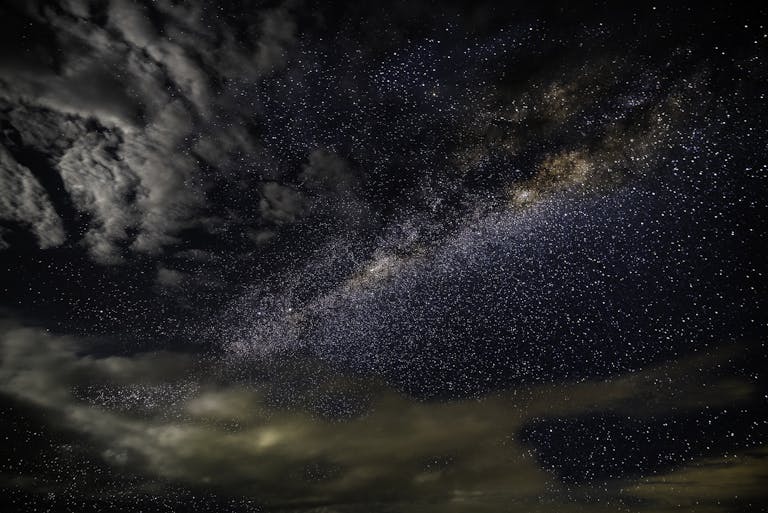Scientists Detect the Hidden Fingerprints of Dark Matter in the Early Universe

A team of researchers from Rutgers University has uncovered new clues about one of the universe’s greatest mysteries — dark matter. Using data from the ODIN (One-hundred-square-degree DECam Imaging in Narrowbands) survey, scientists have mapped how unseen dark matter shaped the earliest galaxies, providing a clearer view of how structures like the Milky Way came to be.
Their findings, published in The Astrophysical Journal Letters, represent the largest analysis yet of Lyman-alpha emitting galaxies — rare, bright systems that lived billions of years ago. By studying how these galaxies cluster together, the team identified distinct “fingerprint-like patterns” in the cosmos that trace where dark matter is most concentrated.
The Hunt for the Invisible
Dark matter doesn’t emit or reflect light, yet it makes up most of the matter in the universe. We can’t see it directly, but its gravity influences how galaxies move, how clusters form, and how the cosmic web — the vast structure connecting galaxies — is arranged.
The Rutgers-led team focused on Lyman-alpha emitters (LAEs), a special class of galaxies that shine brightly in ultraviolet light emitted by hydrogen gas. These galaxies are ideal for tracking dark matter because they glow strongly during their early star-forming stages, making them visible even in the distant universe.
The researchers analyzed images from three separate eras of cosmic history, corresponding to when the universe was about 2.8 billion, 2.1 billion, and 1.4 billion years old. By examining how LAEs were distributed across these epochs, they mapped the gravitational imprints left by dark matter.
Mapping the Cosmic “Fingerprints”
The team used an advanced clustering technique that compares the distribution of galaxies to a random one. This allowed them to identify regions where galaxies are more tightly packed — a sign of dark matter overdensities.
These regions were visualized as contour maps, similar to elevation maps used in hiking. Instead of mountains and valleys, the contours revealed peaks and troughs of dark matter concentration across the sky.
The results were remarkable. Only about 3–7% of dense dark matter regions capable of hosting galaxies actually contained Lyman-alpha emitters. That small percentage implies that galaxies only glow in the Lyman-alpha spectrum during a brief phase of their evolution — perhaps lasting tens to hundreds of millions of years.
This makes LAEs a kind of cosmic lighthouse: they flicker on for a short time, revealing where dark matter gathers before fading as galaxies mature and change.
What the ODIN Survey Is All About
The ODIN survey is one of the most ambitious attempts to study the universe’s invisible structure. Using the Dark Energy Camera (DECam) in Chile, ODIN captures narrowband images — light filtered to very specific wavelengths — allowing astronomers to detect emission from Lyman-alpha lines at different redshifts.
The survey covers over 100 square degrees of sky, an area large enough to include thousands of galaxies across billions of years of cosmic history. For this study, the team analyzed roughly 14,000 Lyman-alpha emitters, making it the largest clustering study of its kind so far.
The researchers measured something called the angular correlation function, which essentially tells how often galaxies are found near each other compared to random chance. From that, they calculated galaxy bias — how strongly galaxies trace dark matter — and derived the typical dark matter halo masses in which these galaxies live.
The Numbers Behind the Discovery
For those who love specifics, here’s what the study found:
- At redshift z = 2.4, the galaxy bias was 1.64, and the typical dark matter halo mass was around 10¹¹.³⁴ solar masses.
- At z = 3.1, the bias increased to 1.84, with a halo mass of 10¹⁰.⁹⁴ solar masses.
- At z = 4.5, bias reached 2.93, with halo masses around 10¹⁰.⁸³ solar masses.
These results show that earlier galaxies (those seen at higher redshifts) were more strongly clustered, which fits with cosmological predictions: in the young universe, galaxies were more closely linked to dark matter structures, forming in the densest regions first.
The typical dark matter halos hosting these LAEs are moderate in size, suggesting they are likely ancestors of galaxies similar to the Milky Way.
How Galaxies and Dark Matter Connect
Galaxies form inside halos of dark matter — massive, invisible envelopes that pull in gas through gravity. This gas cools, condenses, and forms stars, leading to the galaxies we see today.
By studying how LAEs cluster, astronomers can estimate how dark matter is distributed and how massive those halos are. The more clustered the galaxies, the more massive their halos tend to be.
The Rutgers team’s findings confirm that Lyman-alpha emitters reside in moderate-mass halos, and not every halo hosts one. This means the Lyman-alpha phase is not permanent — it represents a short, energetic stage when galaxies are forming stars at high rates.
This is a key insight into how galaxies grow and evolve. Once this bright, youthful phase ends, galaxies likely transition into more quiescent systems that resemble the spiral galaxies we see nearby today.
A Glimpse Into the Early Universe
To truly appreciate this discovery, it helps to understand what it means to look back billions of years.
When we observe galaxies at high redshifts (z = 2–4.5), we’re seeing them as they were over 10 billion years ago, not as they are today. Light from those galaxies has been traveling through space since shortly after the Big Bang.
That makes Lyman-alpha emitters invaluable — they’re windows into the past, showing how the first large-scale structures formed. By mapping where these galaxies live, astronomers are essentially creating a time-lapse map of dark matter as it sculpted the universe.
Why “Fingerprints” Matter
The term “fingerprints of dark matter” isn’t just poetic — it’s a literal description. The dark matter’s gravitational influence leaves patterns in how galaxies cluster, much like fingerprints pressed into clay.
By visualizing these structures, scientists can trace the invisible framework that underpins everything we see in the cosmos.
The ODIN results show that these fingerprints are clear and measurable — and that they evolve as the universe ages. This helps refine our models of cosmic evolution, bridging the gap between theoretical cosmology and observational astronomy.
The Big Picture: What This Tells Us About the Universe
Dark matter acts as the cosmic glue that holds galaxies together. Without it, galaxies would fly apart, and the universe’s large-scale structure would look completely different.
Understanding where dark matter is — and how it shapes galaxies — is crucial to solving broader questions:
- How did galaxies like the Milky Way form?
- What determines how galaxies grow and merge?
- Why do some galaxies stop forming stars while others remain active?
By linking the visible (Lyman-alpha galaxies) with the invisible (dark matter), the ODIN study helps fill in the missing pieces of that puzzle.
Strengths and Challenges of the Study
This research stands out because of its large dataset and careful statistical approach. Analyzing over 14,000 galaxies across three cosmic epochs allows for a robust comparison of how clustering evolves over time.
However, the researchers also acknowledge challenges:
- Model dependence: Estimating how many halos host LAEs requires assumptions about galaxy lifetimes, selection effects, and luminosity.
- Contamination: Some galaxies may have been misidentified, with other emission lines (like [O III] or [O II]) mimicking Lyman-alpha.
- Limited survey area: Even a 9-square-degree field can miss the largest cosmic structures, slightly affecting clustering strength.
- Redshift uncertainties: Narrowband imaging provides approximate distances, not precise redshifts, which introduces some uncertainty in the analysis.
Despite these challenges, the study represents one of the most comprehensive mappings of dark matter’s influence at early times.
The Next Steps
The ODIN project is still ongoing. Future phases will extend the survey to even larger regions of the sky, allowing scientists to study more galaxies and refine their measurements.
As more data arrives, astronomers hope to build a 3D map of dark matter stretching from the early universe to the present day. This could eventually reveal how galaxies evolved from faint, starbursting systems into the massive spirals and ellipticals we see today.
Understanding Lyman-alpha Emitters
For readers curious about these special galaxies: Lyman-alpha emitters are typically young, low-mass, star-forming galaxies with very little dust. Their defining feature is the strong Lyman-alpha emission line — a specific wavelength of ultraviolet light produced when hydrogen atoms recombine after being ionized by young, hot stars.
Because Lyman-alpha photons scatter easily, they escape only from galaxies with relatively clear paths, meaning these galaxies give astronomers a clean look into the early universe.
Studying LAEs helps scientists understand the reionization era — the period when the first stars and galaxies ionized the intergalactic medium after the cosmic “dark ages.”
The Continuing Mystery of Dark Matter
Even with this progress, dark matter itself remains a mystery. Scientists know it exists because of its gravitational effects, but no one has directly detected it.
Various theories suggest it could consist of weakly interacting massive particles (WIMPs), axions, or other exotic particles yet to be discovered. Until we know what it is, astronomers continue to study where it is — and how it influences the visible universe.
The ODIN study is part of that effort. By observing how galaxies trace the cosmic scaffolding of dark matter, we inch closer to understanding the universe’s hidden architecture.
Reference
Research Paper: ODIN: Clustering Analysis of 14,000 Lyα-emitting Galaxies at z = 2.4, 3.1, and 4.5





